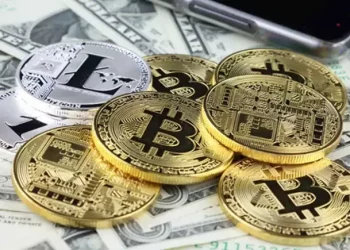In today’s digital age, the rise of digital currency has revolutionized the way we perceive and utilize money. From cryptocurrencies like Bitcoin to digital payment systems like PayPal, digital currencies have become increasingly prevalent in our daily lives. However, despite the convenience and efficiency of digital transactions, there are still instances where individuals may need to convert their digital currency into traditional cash. In this comprehensive guide, we’ll explore the process of converting digital currency into cash, from the methods available to the factors to consider.
Understanding the Conversion Process:
Converting digital currency into cash involves several steps and methods, each with its own advantages and considerations. Here are some common methods used for converting digital currency into cash:
1. Cryptocurrency Exchanges:
Cryptocurrency exchanges are online platforms where users can buy, sell, and trade digital currencies such as Bitcoin, Ethereum, and Litecoin. To convert digital currency into cash, users can sell their cryptocurrency holdings on these exchanges and withdraw the proceeds in fiat currency (traditional currency like USD, EUR, or GBP). The exchange typically facilitates the conversion process and may charge fees for transactions. Users should consider factors such as exchange fees, liquidity, and security when choosing a cryptocurrency exchange.
2. Peer-to-Peer (P2P) Transactions:
Peer-to-peer platforms allow individuals to buy and sell digital currency directly with each other without the need for an intermediary. Users can advertise their digital currency holdings on these platforms and negotiate the terms of the transaction with potential buyers. Once a transaction is agreed upon, the seller can receive payment in cash from the buyer through various methods such as bank transfer, cash deposit, or in-person exchange. P2P transactions offer flexibility and privacy but require caution to avoid scams or fraudulent transactions.
3. Bitcoin ATMs:
Bitcoin ATMs, also known as BTMs, are physical kiosks that allow users to buy and sell Bitcoin using cash or debit/credit cards. Some Bitcoin ATMs also offer the option to withdraw cash by selling Bitcoin. Users can initiate a cash withdrawal transaction by selecting the “Sell Bitcoin” option on the ATM interface, specifying the amount of Bitcoin to sell, and choosing the cash withdrawal option. The ATM will dispense the corresponding amount of cash after the transaction is confirmed. Bitcoin ATMs provide convenience and accessibility for users seeking to convert Bitcoin into cash quickly.
4. Over-the-Counter (OTC) Trading:
Over-the-counter trading involves buying and selling digital currency directly with a counterparty outside of a traditional exchange. OTC trades are often facilitated by brokers or OTC trading desks and are suitable for high-volume transactions or institutional investors. Sellers can negotiate the terms of the trade with the buyer, including the price and payment method, and receive payment in cash or through bank transfer upon completion of the transaction. OTC trading offers personalized service and liquidity for large transactions but may involve higher fees and counterparty risk.
5. Digital Payment Platforms:
Some digital payment platforms allow users to transfer funds from their digital currency wallets to their linked bank accounts or prepaid debit cards. Users can initiate a withdrawal transaction through the platform’s interface and specify the desired withdrawal amount and payment method. The platform will process the withdrawal request and transfer the funds to the user’s designated bank account or debit card, where they can be accessed as cash. Digital payment platforms offer convenience and integration with traditional banking services but may impose withdrawal limits and processing fees.
Conclusion:
In conclusion, converting digital currency into cash involves a variety of methods and considerations, each with its own advantages and limitations. Whether using cryptocurrency exchanges, peer-to-peer platforms, Bitcoin ATMs, OTC trading, or digital payment platforms, individuals can choose the method that best suits their preferences, needs, and circumstances. By understanding the conversion process and exploring the available options, individuals can navigate the transition between digital currency and cash seamlessly and efficiently.
Related posts:

















